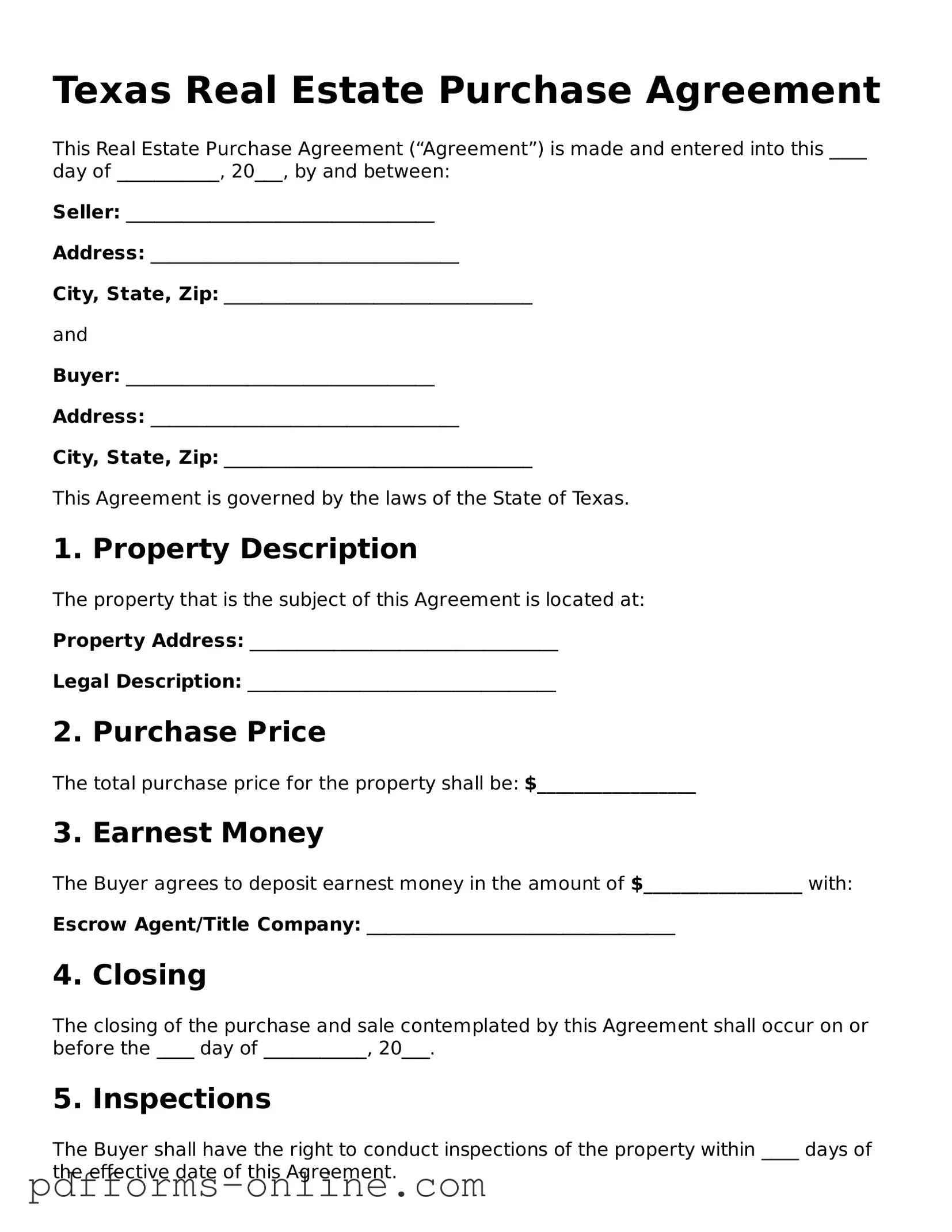Texas Real Estate Purchase Agreement
This Real Estate Purchase Agreement (“Agreement”) is made and entered into this ____ day of ___________, 20___, by and between:
Seller: _________________________________
Address: _________________________________
City, State, Zip: _________________________________
and
Buyer: _________________________________
Address: _________________________________
City, State, Zip: _________________________________
This Agreement is governed by the laws of the State of Texas.
1. Property Description
The property that is the subject of this Agreement is located at:
Property Address: _________________________________
Legal Description: _________________________________
2. Purchase Price
The total purchase price for the property shall be: $_________________
3. Earnest Money
The Buyer agrees to deposit earnest money in the amount of $_________________ with:
Escrow Agent/Title Company: _________________________________
4. Closing
The closing of the purchase and sale contemplated by this Agreement shall occur on or before the ____ day of ___________, 20___.
5. Inspections
The Buyer shall have the right to conduct inspections of the property within ____ days of the effective date of this Agreement.
6. Contingencies
This Agreement is contingent upon:
- Financing
- Inspection results
- Clear title
- Other: _________________________________
7. Additional Terms
Any additional terms or conditions related to this transaction will be outlined here:
Additional Terms: _________________________________
8. Signatures
The parties hereto have executed this Agreement as of the date first above written.
Seller Signature: ___________________________
Date: ____________
Buyer Signature: ___________________________
Date: ____________
This template is intended for informational purposes only. It is advisable to consult with a qualified legal professional before finalizing any real estate transactions.
